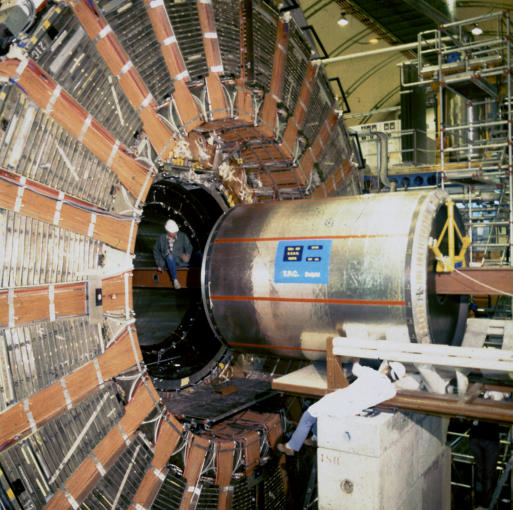
Delphi detector at CERN: Installing of the time projection chamber
(track detector) inside calorimeters.
Principle
A charged particle going through matter interacts with the numerous
electrons. A tiny fraction of the energy of the original particle is
transferred to the electrons that will escape from the atom where they were
bound. The observation of these free electrons will show where the original
particle passed. Detecting many of these points results in an accurate
determination of the particle trajectory.
Track detectors
Most modern particle experiments incorporate several track detectors. These
detectors consist of a gas volume in which the particles leave a trail of
ionisation i.e. negative electrons and positive ions. The ionisation is either
collected on thin metal wires in the gas volume or the electrons are made to
drift in an electric field to the end of the gas volume, where they are
collected onto thin metal wires and result in an electric pulse. The position
of the metal wire and the measured drift time indicate where the original
particle passed. Often the ionisation is registered on small pads rather than
on wires. Information on the "fired" pad and the drift time gives a point in
space where the particle has passed. Several such points are needed to
determine the particle trajectory. In DELPHI most track detectors are different
types of drift chambers.
Momentum determination
Charged particles are deviated in a magnetic field. The larger the
momentum, the smaller the deviation. By measuring this deviation the momentum
can be determined. The track detectors are therefore often placed in a strong
magnetic field. In DELPHI the magnetic field is created by a supraconducting
solenoid. The magnetic field inside the solenoid is parallel to the beam line
of the colliding particles and its strength is 1.2 Tesla.
